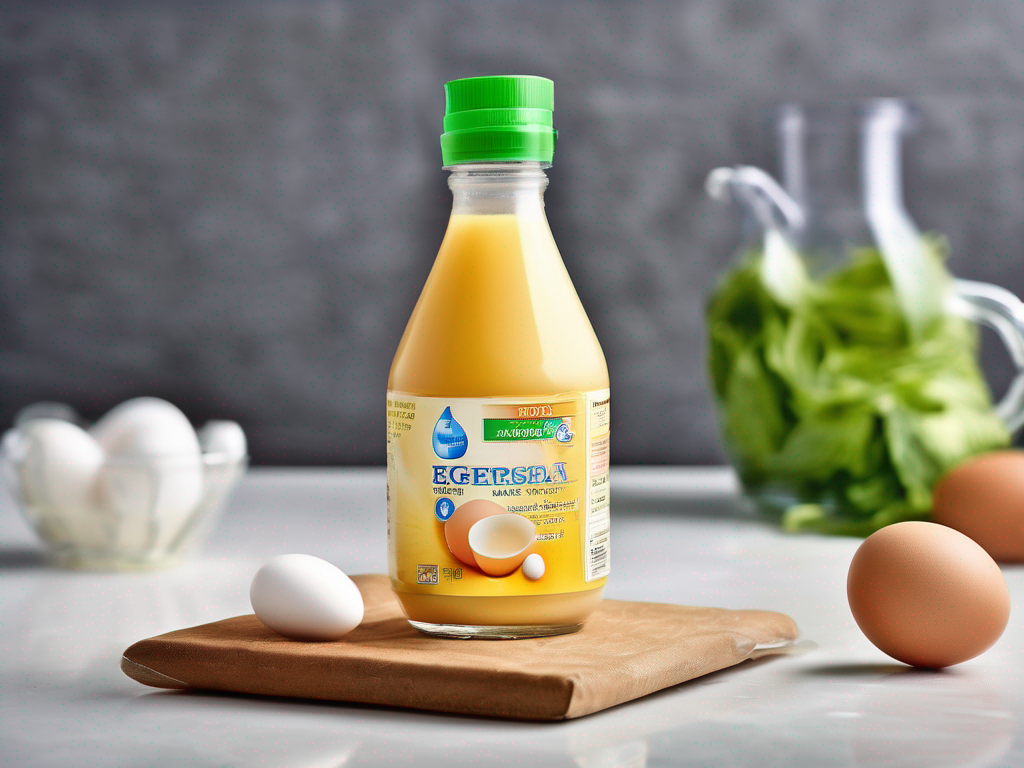
Is Your Egg Substitute Liquid Sold Refrigerated Unopened Package Bad? How to Tell
Get Your Free Food Safety Cheat Sheet
30 most common foods with instant answers. Print it and stick it on your fridge—completely free!
Is Your Egg Substitute Liquid Sold Refrigerated Unopened Package Bad? How to Tell
In today's health-conscious world, many people opt for egg substitute liquid sold in refrigerated, unopened packages as a healthier alternative to traditional eggs. However, just like any other food product, these substitutes can go bad if not stored or handled properly. In this blog post, we will explore how you can determine if your egg substitute liquid has gone bad and what steps you can take to ensure its safety. (Egg substitute liquid sold refrigerated unopened package)
Understanding Egg Substitute Liquid
Egg substitute liquid is a convenient and versatile product that can be used in various recipes as a substitute for whole eggs. It is typically made from a blend of egg whites, vegetable oils, and other ingredients to mimic the texture and flavor of eggs. This product is often sold in refrigerated, unopened packages to maintain freshness and extend its shelf life.
Signs that Your Egg Substitute Liquid Has Gone Bad
Visual Inspection
- Check for Mold: Mold growth is a clear indicator that your egg substitute liquid has spoiled.
- Examine the Texture: If the liquid appears curdled or has an unusual consistency, it may be a sign of spoilage.
- Look for Discoloration: Any changes in color, such as a yellow or green tint, can indicate spoilage.
Smell Test
- Foul Odor: If the egg substitute liquid emits a strong, unpleasant odor, it is likely spoiled.
Expiration Date
- Check the Label: Always refer to the expiration date on the packaging. If the product is past its expiration date, it is safest to discard it.
Proper Storage Tips for Egg Substitute Liquid
To prolong the shelf life of your egg substitute liquid and prevent spoilage, follow these storage tips:
- Refrigeration: Always store the unopened package of egg substitute liquid in the refrigerator at a temperature below 40°F (4°C).
- Avoid Temperature Fluctuations: Keep the product away from areas with temperature fluctuations, such as near the stove or in direct sunlight.
- Use airtight containers: If you transfer the liquid to a different container, ensure it is airtight to prevent contamination.
- Follow Manufacturer's Guidelines: Adhere to any specific storage instructions provided by the manufacturer.
Safety Precautions When Using Egg Substitute Liquid
When using egg substitute liquid in recipes, keep the following safety precautions in mind:
- Cook Thoroughly: Ensure that the egg substitute liquid is fully cooked in recipes that require cooking to kill any potential bacteria.
- Avoid Cross-Contamination: Clean utensils, surfaces, and hands thoroughly after handling egg substitute liquid to prevent cross-contamination.
- Do Not Consume Raw: It is not recommended to consume raw egg substitute liquid due to the risk of foodborne illness.
Conclusion
In conclusion, it is essential to be vigilant when it comes to determining the freshness of your egg substitute liquid. By conducting visual inspections, performing smell tests, and checking the expiration date, you can ensure the safety of the product. Proper storage and handling practices are also crucial in maintaining the quality of the egg substitute liquid. Remember to follow safety precautions when using the product in recipes to minimize the risk of foodborne illnesses. By staying informed and practicing good food safety habits, you can enjoy your egg substitute liquid safely and deliciously.
Remember, when in doubt, it's always best to err on the side of caution and discard the product if you suspect it may be spoiled. Your health and well-being are worth the extra precaution. (Egg substitute liquid sold refrigerated unopened package)
Authoritative Food Safety References
These agencies and university labs inform every tip and health precaution we publish.
USDA FoodKeeper – Cold Storage Guidelines
Official refrigerator, freezer, and pantry timelines maintained by the U.S. Department of Agriculture.
Visit USDA FoodKeeperFDA Produce Safety Rule & Grower Guidance
Field-to-fridge handling practices that prevent contamination of fruits, vegetables, and leafy greens.
Visit FDA Produce SafetyCDC Foodborne Illness Prevention Hub
Surveillance-backed guidance on pathogens, symptoms, and steps to reduce foodborne illness risk.
Visit CDC Food SafetyUC Davis Postharvest Technology Center
University research detailing optimal storage atmospheres for produce after harvest.
Visit UC Davis PostharvestPenn State Extension – Home Food Preservation & Safety
Peer-reviewed extension bulletins on safe canning, chilling, and reheating practices.
Visit Penn State ExtensionGet Your Free Food Safety Cheat Sheet
30 most common foods with instant answers. Print it and stick it on your fridge—completely free! Want more? Upgrade to the complete guide with 70+ foods.
Scan your food directly and get instant safety info using our AI-powered camera feature.